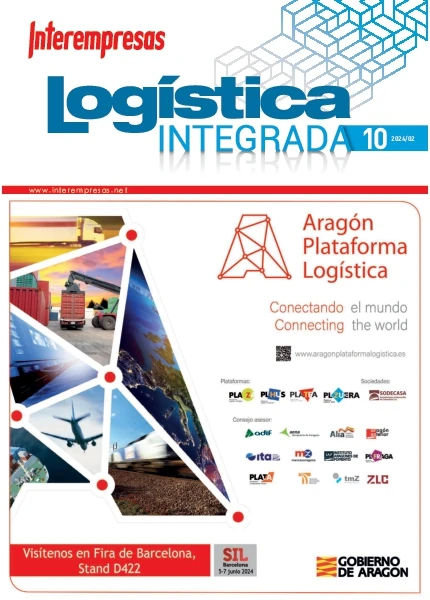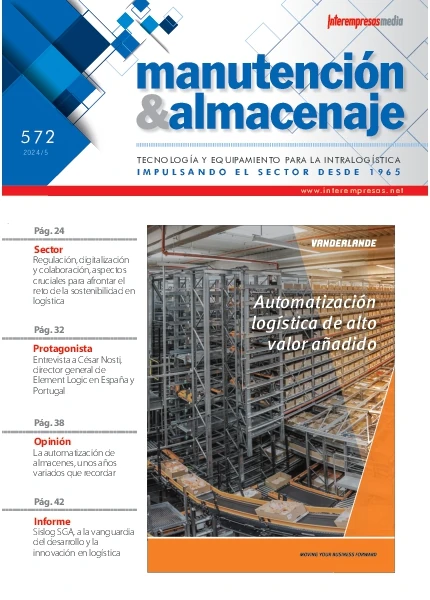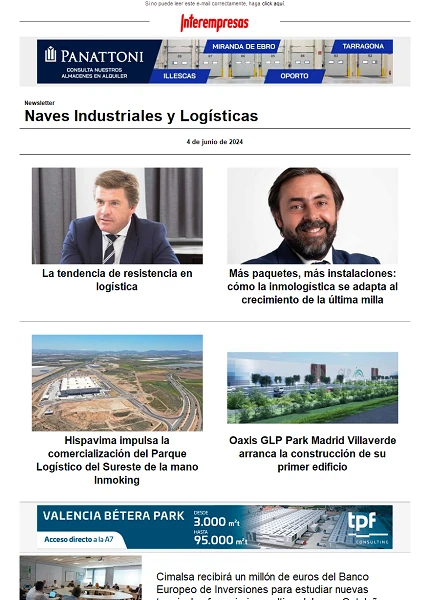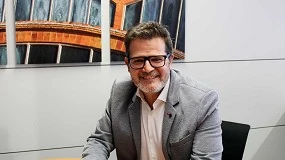Logistics is gaining ground, by land, sea and air
June 1, 2009

Logistical soil becomes value space: road network well connected main and secondary roads, access to ports, airports and rail infrastructure.
The producers of sites for the logistics sector must take into account new elements in the urbanization, how communications infrastructure to create spaces that facilitate from the operation of wireless technologies to the presence of humanoid robots for the performance of certain logistical tasks; ultimately, bid projects with vision for the future, able to adapt to enlargement and to the diversification of the adjacent infrastructure, and incorporate the technological requirements that will involve logistics that comes. And for placing on the market logistical ground of quality are necessary large companies as well as collaboration between the public and private sectors.
What is clear is that logistical soil that is being generated is not any soil, soil of value, ground to make possible a new logistics: efficient, flexible, green and ethical.
The CISG and the Zal to the intermodal Po
The origins of the Logistics Park in Spain are placed in what came to be known as city of polygons transport or integral central of goods (CISG), specialized in transport, companies as explains Ignasi Ragàs, general director of Cimalsa, "in many instances had as objective initial away such enterprises in the urban centres and place them on sites" "with direct access to the means of communication".
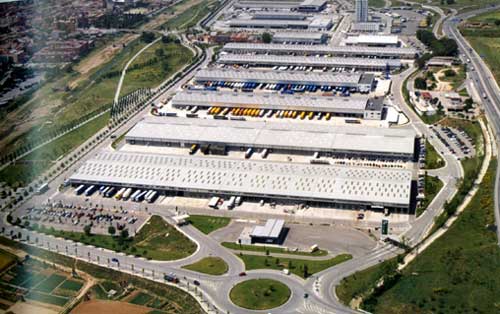
At the same time, came the logistics parks with a specific type, the Zal or areas of logistics activities, located in port domain sites.
The logistics park offers values added to the polygon concept, as it is intended especially for transportation and logistics. Ignasi Ragàs and describes us some of these added values: "Have to do with specific design of the roads and farms to efficiently accommodate the transport and logistics companies, access to high capacity roads and complementary services offered to persons of the polygon", as a centre of business, restaurants, etc. "Today, a centre of logistics activities is one from a critical mass of logistics companies offering complementary services".

The trend for the coming years pointing towards the production of logistical land in strategic locations that allow intermodality.
This is corroborated by Balcells: "thing that most lack makes is intermodality in particular rail transport, which is for long distances, the more eco-friendly and which least affects the territory".
In its place
Traditionally, the business world has sought efficiency, has hurgado in the optimization of processes, has investigated the use of synergies, has experimented with management and retention of talent and has courted the difficult task of generating and managing a host of these elusive and difficult to measure valuesthe intangible, that although they have always been there, seem to be a novelty. Throughout all this time the finance departments of human resources, purchasing or communication, among others, have starred the debate while the logistics was offstage.
Today has become clear that logistics is a factor of competitiveness for the industry, and all indications are that the logistics will be an area of high growth and high generation of economic activity.
Evolved and demanding consumer societies are the hallmark of our time. The consumer has sophisticated and immediate to goods and services availability is for him something intrinsic to the system, a no-brainer; is the lógico… Thus, it is objective of the logistics position certain product specific time and a place to meet demand with new requirements. In that context the logistics is destined to become a strategic sector for the advanced economies, which will require increasingly complex solutions, both business and technological, environmental or real estate. A conceptual evolution brings us logistics as the correct planning and organization of flows of goods, energy and information, to a high-precision logistics.
The technological Institute of packaging, transport and logistics, Itene, is working on the development of a logistic process simulator that lets you test the improvements and processes that are developed before putting them into practice, so that you can quantify whether or not they are beneficial. Project, funded by the Centre for studies and experimentation of public works of the Ministry of development for the effectiveness of terminals where the nodal Exchange is done and the logistics platform through the analysis of complex operations in order to recommend improvements to its optimization solutions.
Itene, collaborating in this project with other research centres, universities and companies, leads the paragraph of the draft which seeks to contribute to improving the competitiveness of the centres for modal Exchange and logistics platforms through innovation in processes and technologies. Specifically, the Technology Center is conducting simulation of logistics processes occurring at the entrances and inside these platforms to detect bottlenecks and measure the degree of improvement that contribute certain practices and technologies.
On the other hand, it will also conduct pilot tests of simulation with case studies based on companies participating in the project. These models developed by Itene they develop on other more simple to reach the maximum reality as possible in order to make the simulation.
The conclusions to be drawn in the draft, which will last two years, will serve to advise both the administrations concerned in the economic and social structuring of its territory, as well as logistical and industrial sector to streamline and optimise the processes which are carried out in the logistical platformsas well as the standardization of the same.
Deconstructing prejudices
The mixed nature of the logistics centres, participated jointly by the public and the private sector, ensures the sustainable implementation of the parks. If companies are using logistics as a tool for the Organization and rationalization par excellence of the movement of goods, logistics parks are at the same time the management and the rationalization of logistics activity. Today, urbanized land promoter manages, in many cases, the services of the polygons that promotes and seeks to also generate economic activity around the infrastructure, employment generation and also create a friendly environment to work and live.
That's why, because somehow this space becomes public, that CSR takes on particular importance in generating companies of ground and logistical infrastructure.

Mediterranean: the natural route
For 2,500 years, the Mediterranean corridor is the corridor of communication and transportation between the South of the Mediterranean and North Africa and the Iberian Peninsula and Europe. In this context, the port infrastructures are called to play a key role in the economy and trade; 50% of exports and 80% of imports in Spain are carried out by sea. The next year is scheduled for the entry into force of the Euro-Mediterranean free trade area, initiative in which the sectors of transport and logistics will be key for achieving the integration of a market of 800 million inhabitants, and that there are various projects underway aimed at boosting her, as the Euromed Transport, the Safemed, motorways of the sea and the Marco Polo programme for the management, control and development of the carriage of goods by sea. The purpose of each of these projects is today today, promote a Mediterranean Sea can act as a global and decisive player in the current model of economy.
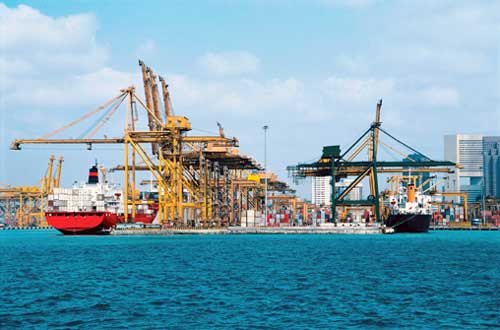
General modal EU27. 2007 (M t)
• Railway 17 %
• Highway 73 %
• River 5 %
• Pipe 5 %
Final consumption of energy. Spain (equivalent t M of oil)
The transport sector (which represents 43% of the total consumption of all sectors) 2006
• Railway 2.7 %
• Road were 79.6 %%
• River 4.2 %
• Air 13.7 %
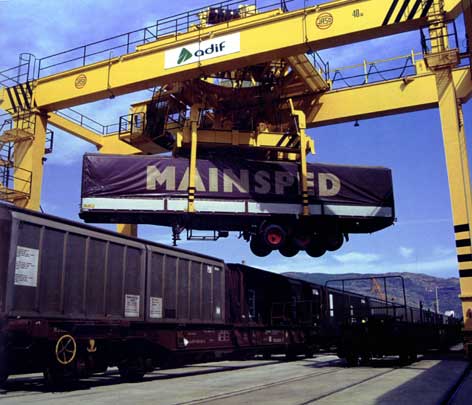
The train? Llegará…
For its part, from Abertis logistics, Alfonso Martinez said that "investment in railway infrastructure for the transport of goods is one of the major problems of this country, and the solution must lead her public service." It's an investment in the very long term, profitable and, in the end, is the demand which determines the range: the client, for the time being, does not request this transport. "Everything is a matter of profitability, and customer road haulage is more profitable."
Martinez explains that Abertis logistics sites have rail intermodality and the forecast is that "in 10 or 15 years the rail freight to expand its market share, although - continues - this will be the 8 or 10%;" the bulk of the transport will be first the sea of long
The sector in figures
For what regards the location of the centres, the metropolitan areas of Madrid and Barcelona, due to its strategic location and its vast network of connections, as well as because of its great importance as centres of economic activitythey have been established in areas with a greater number of logistics parks. In Catalonia there are installed 24 parks and 23 in the community of Madrid.
According to the report published at the beginning of the year by the DBK consulting, "progressive saturation and increase in the price of the ground have prompted a shift towards neighboring provinces in recent years and in the vicinity of the channels of communication between the two capitals." "Thus, Aragon is autonomous community with a greater surface area, concentrating 39% of the national total, compared with 11.4% in Catalonia and 11% of Castilla - La Mancha."
The study of DBK cites as the five largest companies in the sector, in terms of surface area of parks: Abertis logistics, Cimalsa, Plaza, Grand Europe Group and Plataea, which gathered together 60.6% of the operating only surface in Spain in 2008. The top ten operators reached 72.7%.
The demand for industrial land continues upwards in cities such as Madrid, Barcelona, Seville and Valencia, especially in logistics platforms located in the vicinity of urban centres. However, due to the scarcity of land, there is a shift from industrial developments towards the areas furthest from the city. In recent years both the Government and the different autonomous communities attempt to structure the transport sector and linking the logistics activity with the development of new communication infrastructures.
The Cim La Selva, 22.5 hectares is a platform for logistics activities for middle and high rotation: transport, packaging, distribution and storage. It is located in the towns of Vilobí d'Onyar and Riudellots de la Selva, next to the airport of Girona. Cimalsa investment for the development of the Cim La Selva is estimated at EUR 25.8 million. The project has the European co-funding by the European Fund of Regional Development (ERDF).
The Cim La Selva airport and Logistics Park constitutes an infrastructure that will provide added value to the airport of Girona. This complex, with an investment of 40 million euros public-private, will have a hotel with Convention Center, 4,000 square metres of offices and a large car park, among other services.

Sizes and prices
After the sensitive increase that occurred in 2006, has taken up the downward trend in the middle of the Park surface. In 2008 the total average surface was 399,000 square meters, while the only decreased to 167,000 square meters.
So far as to income from rental of warehouses for logistics parks, although with a trend of slowdown, they continued to grow significantly, supported by the increase in the occupied area and the prices. In 2008 reached a figure of 215 million euros, 13% higher than the previous year.
Geoestatégica position, the existence of two important ports and the presence of a significant critical mass of production and consumption makes this a territory with a high demand for logistical land.
There are a total of 14 logistics platforms, which are a gross area of 654 hectares, of which 75% is public initiative in the Catalan community. The metropolitan area of Barcelona is that concentrated more this soil surface, given its volume of production and consumption by the presence of its port.
Of total useful area of available nationwide logistics warehouse, 26 per cent are in the Catalan community.
With regard to the evolution of prices, according to the analysis carried out by the Institute Cerdà "Indicators of competitiveness of the Catalan logistics system", the average price for the rental of logistic area in Catalonia has experienced a growth of 3.6% per year during the period 2005-2007.
In the short and medium term forecasts point to to extend the transfer of the logistics activities to facilities specifically designed for them, largely driven by the increase in outsourcing of this service.
As reported by DBK, "at the end of 2008 were recorded over 130 projects for construction or expansion of logistics parks, of which around fifty have planned their opening between 2009 and 2010, although due to the economic situation some of them could be postponed or even grind to a halt". According to the same source, "if it complied with the deadlines stipulated, at end of the current year would running around 150 centres, which would annual high growth to 20 per cent".
Taking into account the parks project, some of them of great size, the total area will grow nearly 35 per cent this year and more than 25% next year. Thus, at the end of 2010 is expected to exceed 70 million square meters, building 44%. With regard to the turnover derived from the rental of ships, despite a negative situation, DBK predicts a growth of between 7 and 8% per year in 2009-2010.

